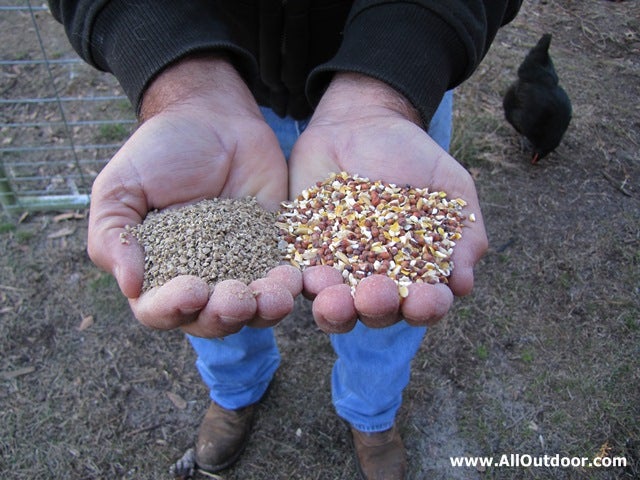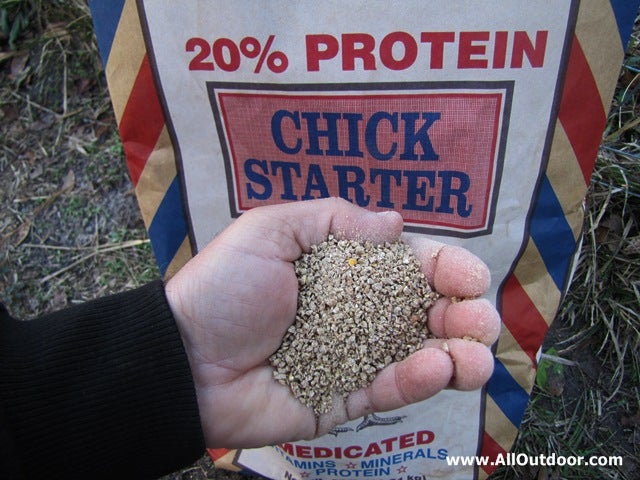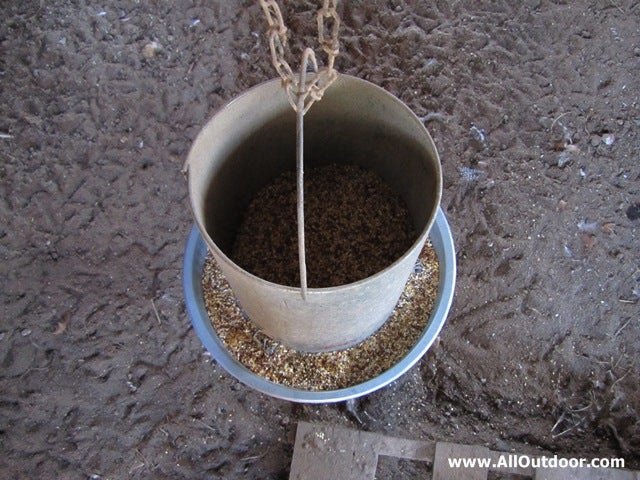Different Types of Chicken Feed
Kevin Felts 02.11.17

When people talk about getting chickens, one of their first questions is about chicken feed. The dietary requirements for chickens is complicated. Chickens are omnivores, meaning they can eat fruits, vegetables, and meat.
Modern chickens are decedents from a junglefowl from southeast Asia. In their native habitat, chickens would be able to forage for a wide range of seeds, grass, and bugs. Factory raised chickens for egg and meat production can not forage, so their feed has to be specialized to meet their nutritional needs.
Chicken Feed History
In the twentieth century, there were great advances in poultry and poultry nutrition. Families moved to cities from rural areas and could no longer raised their own chickens. In response to a swelling urban population, chicken farming became specialized.
As demand for grocery store supplied eggs and chickens increased, companies looked for ways to improve production. As a result, different blends of chicken feed were developed to maximize growth and egg production. Unlike their rural cousins, chickens kept in hatcheries can not forage for incests or seeds, so their feed has to contain all of the nutrients they need.
Let’s take a look at the various types of feed and discuss how they play a role in growth and egg production. There are four main types of chicken feed on the market.
Chick Starter
After a chick hatches, this is the first type of feed it is given.
Starter contains around 20% protein and has a medicine that helps fight an intestinal parasite called coccidiosis, which is spread fecal-to-oral route. Medicated chick starter is not the same as giving them antibiotics. The medicine included with the starter protects against one type of intestinal parasite.
Chick starter has the highest protein content of the different types of feed.
I usually feed my chicks starter until they are around six weeks old. A lot of people give their chicks starter until they reach eight weeks old
After chick starter comes chick grower.
Chick Grower
Grower contains around 17% protein and is not medicated. This is usually given until the chicks are around 5 months old or until the hens start laying.
When I introduce new chicks to the flock, the whole flock gets chick grower for about a month. After that month, everyone gets moved to layer feed. It is impossible to have a chicken flock of mixed ages, and have different feed for each age group. If you put feed out, they are going to eat it.
When a hen starts laying eggs their nutritional needs change.
Layer
Chicken layer is specially formulated to meet the nutritional needs for hens who are laying eggs. Nutrients include vitamin A, vitamin E, riboflavin, vitamin D3, calcium, and protein, just to name a few.
This is available in either crumbles or pellets. Crumbles are feed that has been processed to about the size of a small seed. Pellets are elongated and are around 1/8 inch in diameter and around 1/4 inch long.
My chickens have always preferred crumbles over pellets. Put crumbles in one feeder and pellets in the other, my chickens will not touch the pellets until all the crumbles are gone.
Chicken layer is specially formulated to meet all of the nutritional needs of chickens. It has just the right amount of protein, calcium, and other trace nutrients for a chicken to lead a healthy life.
Chicken starter, grower, and laying crumbles all look alike.
Hen Scratch
When someone says chicken feed, this is usually the first thing that comes to mind. This is processed corn mixed with various grains.
Scratch is not a balanced feed and does not meet all the nutritional requirements for chickens. The main purpose of scratch is to keep weight on laying hens.
I have a deer feeder filled with hen scratch. It is set to go off twice a day year round. As the foliage dies back during the winter months, I give the flock more hen scratch than in the summer months. This helps add weight to the chickens for the winter months.
Young chicks can not digest hen scratch. Do not give this to your chicks until they are several months old.
Do not Sweat the Small Stuff
When I first got chicks, I would worry about if I was keeping them on chick starter for too long, or not long enough, or did I switch them to laying crumbles too early?
There is no need to worry. Some of my young chicks were on chick grower for only a few weeks, then the whole flock was switched to laying crumbles. All of the chicks turned out to be average size and good layers.

